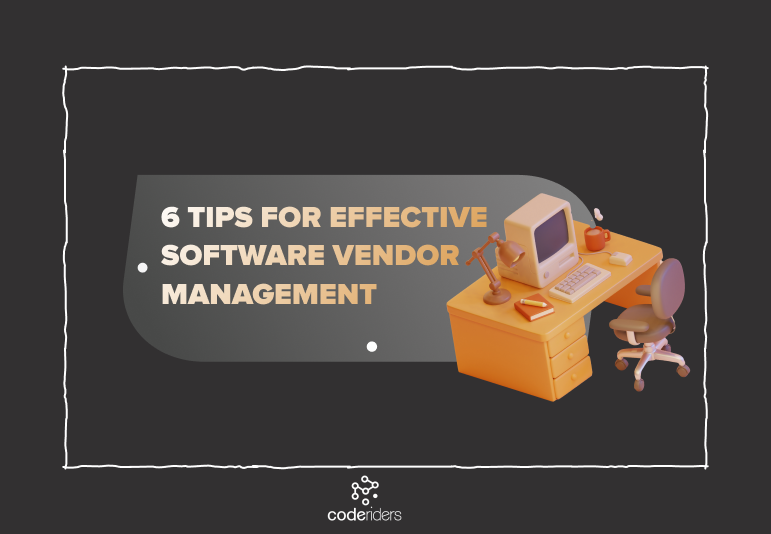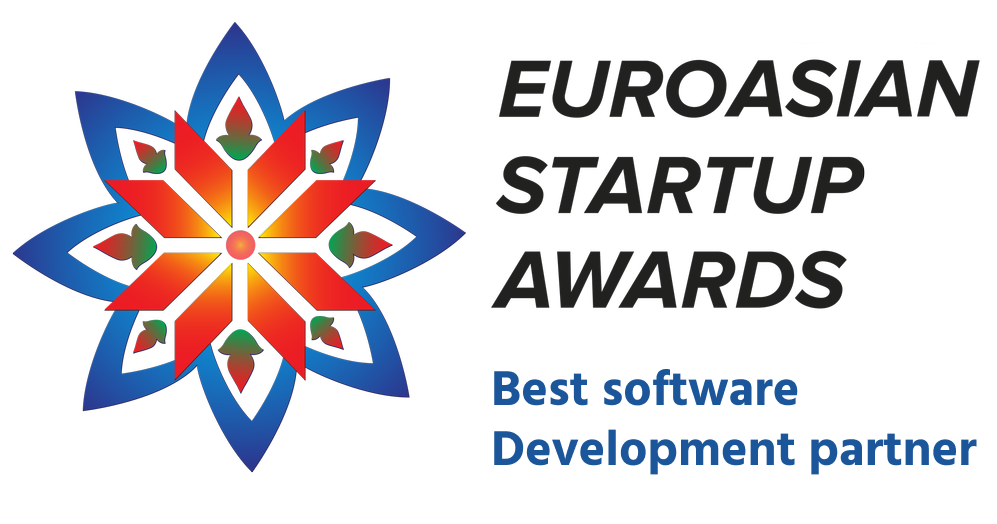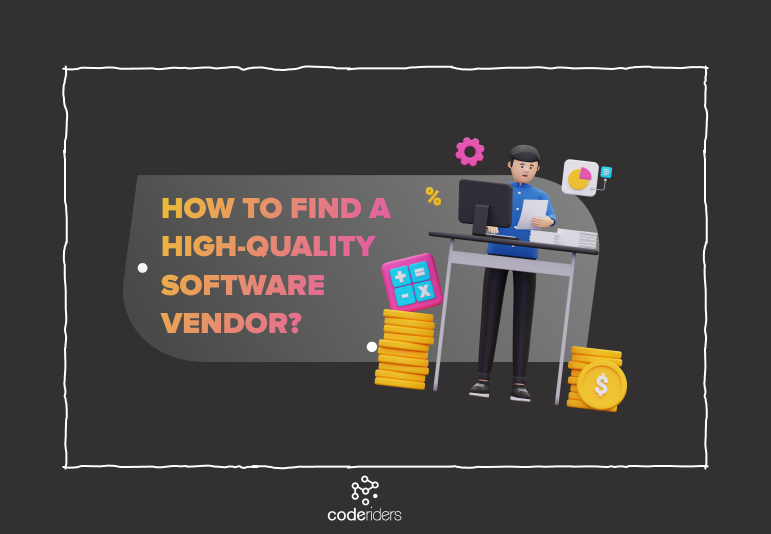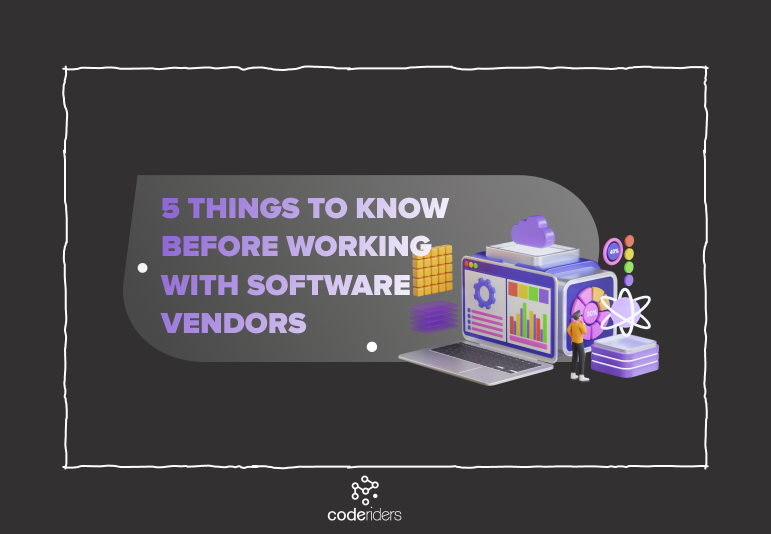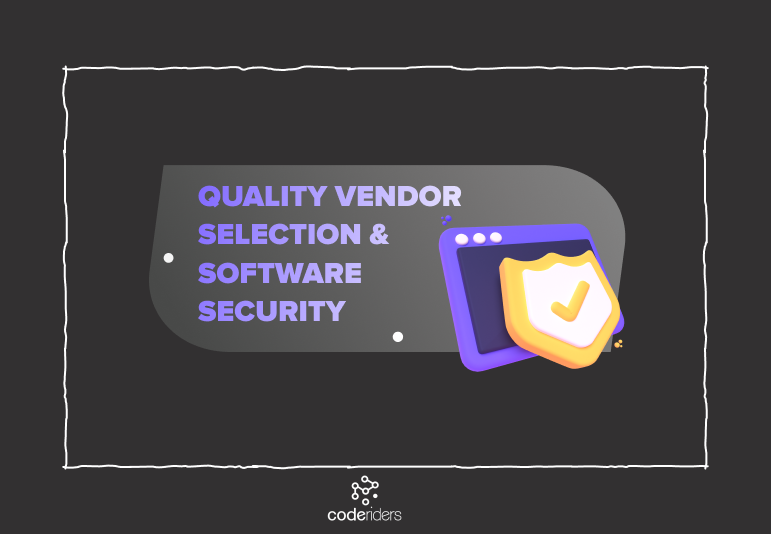Software development outsourcing is a common and mutually beneficial process in the tech industry. Hiring an outsourcing company can save you time and money, but it’s a process that demands thorough vendor management skills and a level of mutual understanding.
Behind the scenes of every successful software development project, you’ll find top-notch team organization, concrete knowledge of all employees’ roles and responsibilities, transparent communication, and other steps both parties have taken to ensure maximum success.
As a business development specialist at CodeRiders Custom Software Development Company(link is external), I’ve identified some useful strategies for establishing an efficient relationship between agency and client. Before jumping into your next outsourcing partnership, take some time to review these 6 tips for effective vendor management.
6 Tips for Effective Vendor Management
- Provide a clear picture of your project
- Appoint a dedicated project manager
- Communicate often and clearly
- Determine the right KPIs
- Remain responsive and available
- Understand cultural differences
Subscribe to Newsletters
1. Provide a Clear Picture of Your Project
It’s very important that your software outsourcing knows exactly what you’re expecting from the project.
You’ll want to send complete documentation of your project to the vendor you’ve chosen and discuss it in detail. If any aspects need further clarification, don’t hesitate to jump on a video meeting, on platforms like Zoom or Skype.
But what if you don’t know where to start when it comes to laying out your project details? Here are some helpful hints to keep in mind when creating your product documentation:
- Include tech specifications, business logic, and manuals
- Narrow down details with architecture description, program source code, and other relevant points
- Include guidelines for precise test schedules, meeting notes, and reports
- Outline the product’s purpose, features, maintenance, functionalities, and other characteristics
- Define reasonable timelines and budget expectations
After you’ve gone over the documentation in detail together, it’s a good idea to lay your project out on a shared spreadsheet, so that both parties can easily reference it throughout the engagement.
For successful examples, check out a couple of e-commerce website case studies from CodeRiders(link is external).
2. Appoint a Dedicated Project Manager
A crucial part of any project’s success is appointing one person to manage communication between the client and the vendor. They can be a team lead, business development manager, or really anyone in a qualified position to understand the project’s best interests.
Make sure your project manager engages with the vendor’s team lead to review their plan for the project. What are some things you should look out for? Make sure to review:
- Job sequences
- Number of employees
- Deadlines
- Technologies used
- Communication plans
Before you begin the project, ensure both parties’ approaches to the project are aligned.
You can also make a small scope of work document (SOW) for yourself and your software vendor. This document will clarify and specify your needs and aims and will guide you both during the whole software development lifecycle. This is a great way to avoid misunderstanding during your software outsourcing partnership.
free white paper
how to write a solid scope of work sow
3. Communicate Often and Clearly
Having a project manager is necessary, but making sure they help streamline communication with the vendor is an equally important step.
One of the most effective communication tools you can use in a project is instant messenger. We recommend using Slack, Trello, or Jira” but there are many others.
Whichever communication tool you choose depends on your individual needs and preferences. Just make sure you take advantage of its ability to immediately connect you with your outsourcing partner, so you can check in with questions, concerns, or requests whenever you need.
Another area where frequent communication is beneficial is in planning sprints. Aim to organize a call between your teams at least once every 2 weeks to discuss sprint summaries and planning. By doing so, you’ll be able to see everything that’s already been completed, and you can adjust the next sprints accordingly.
4. Determine the Right KPIs
KPIs, or Key Performance Indicators, are another important factor for successful vendor management. They signify how you’ll measure the success of your vendor’s deliverables both during and at the end of the project. They’ll also help you identify business needs and prioritize tasks to achieve your final goal
Smart KPIs are clear and unambiguous, and accurately reflect what you want from your engagement. Before presenting your KPIs to your vendor, establish a clear objective, outline your criteria, collect necessary data, and then build your formulas.

Source: SimpleKPI(link is external)
When you’ve finished drawing up effective KPIs, don’t assume the work is done. If you need to update your objectives throughout the project, adjust your KPIs as well.
Along the way, make sure everyone involved in the project is kept aware of what’s expected of them and why by referencing your KPIs often. This will help keep the big picture in mind even while they’re working on the small pieces.
5. Remain Responsive and Available
We’ve already talked about the significance of your software vendor’s communication skills. However, for an engagement to be truly successful, those skills need to go both ways.
On your side, make sure to demonstrate flexible communication. This includes checking your e-mail, social accounts, and instant messenger as often as possible. For your project to work, your vendor needs to be able to reach you with clarifications and questions as well.
Also, make sure to keep your vendor updated. If you’ve had an internal discussion about a new requirement, don’t just tell them about it””explain its purpose and expected benefits. A crucial aspect of successful outsourcing partnerships is a clear understanding of the “big picture” of the product.
However, if this level of responsiveness still sounds unrealistic for you, have a discussion with your software outsourcing company. Try and come up with the best solution for effective time management, like using online calendars or scheduling tools. That way, your vendor will at least have an idea of when they can reach you if something comes up outside of those bi-weekly sprint calls.
Subscribe to Newsletters
6. Understand Cultural Differences
When thinking about flexibility in a client-vendor relationship, we can’t forget about intercultural communications. Before starting your outsourcing partnership, make sure you understand the cultural and geographical expectations of your vendor.
Start by considering these main factors:
- Time difference
- National pride or politics
- Organizational hierarchy
- Business ethics of various cultures
- Words and phrases that may be offensive or vice versa
- Traditional working days and hours
- Humor
- How to respectfully address one another
These practices and expectations will vary widely based on the location of your vendor. For instance, consider whether your outsourcing partner is more likely to be oriented towards transactions, like in the USA, Canada, or Central and Eastern Europe, or towards relationships, like in many Latin American and Asian countries.

Source: “The Importance of Cultural Difference in International Business”(link is external)
Understanding the difference between relationship-oriented cultures and transaction-oriented cultures is a small but effective step you can take in making sure your business relationship is as strong as possible.
Master These Before Your Next Software Outsourcing Project
Ultimately, there’s no doubt about the benefits of software outsourcing. It’s a practice that can ensure your product is delivered while letting you focus on your own responsibilities.
However, whether the engagement goes smoothly all comes down to knowing these important tips for effective vendor management. Emphasizing clear communication, plans, and expectations are all actions you must take to be successful.
Whatever your next software outsourcing partnership project may be, be sure to keep these simple but significant steps in mind.
Source: Clutch.co article by CodeRiders Business Development Specialist Srbuhi Avetisyan
Having
development
needs?
CodeRiders will address your web and mobile development challenges by creating custom software, helping with outsourcing services, or just consulting on your software development requirements.


